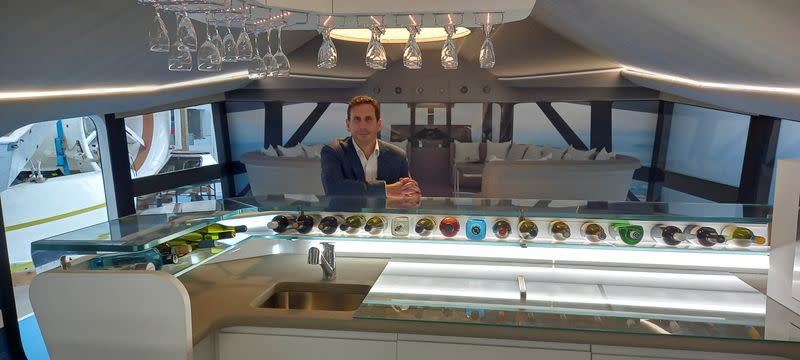UK helium-filled aircraft attracts interest of BAE Systems

By Sarah Young
LONDON (Reuters) - UK-based Hybrid Air Vehicles (HAV) said on Wednesday it is partnering with Britain's biggest defence company BAE Systems to explore the use of its Airlander helium-filled aircraft in transporting equipment and surveillance.
The Airlander 10, which HAV hopes to bring into commercial production in 2026, is attracting attention among aviation, freight and defence companies as they seek to decarbonise air transport.
HAV said it had signed a memorandum of understanding with BAE's FalconWorks unit to explore using the aircraft, which can stay airborne for up to five days, offering potential benefits versus military helicopters.
HAV's CEO Tom Grundy said that while travel is slower than conventional flying, the Airlander emits up to 90% less carbon and that is creating demand despite the problematic past of airships.
The Hindenberg disaster, a hydrogen-filled airship which caught fire in 1937, killed 36 people.
In 2016 Airlander's double-hulls, nicknamed the "flying bum", crash landed during trials, and a year later it was pictured ripped and deflated after it came loose from moorings.
Grundy, however, is confident that the technology has improved and there will be a market for the Airlander, which uses aerodynamics, buoyancy and vectored thrust from four combustion engines to fly at about the same altitude as a helicopter.
"We're getting the economics, we're getting the technology, we're getting the customers and once you have a system like that that's working, consumers get on board," Grundy told Reuters in an interview at a small testing hangar in central England.
"Passengers didn't stop getting on board ships after the Titanic disaster."
SWEET SPOT
Spanish regional aircraft Air Nostrum has already reserved 20 Airlanders ahead of production starting. It could use the aircraft to fly the four-hour journey between Spain and the Balearic islands.
This will be the Airlander's sweet spot, said Grundy, adding it is best suited to journeys where "options are long surface transport, perhaps via ferry, or that very short but very carbon intensive flight."
When pumped full of helium, Airlander's hardened fabric shell is almost as long as a football pitch and the height of six double decker buses, with a cabin slung below, and fitted out with either 100 seats or several luxury bedrooms.
HAV's plan is to build a factory to start making Airlanders by 2026 before 18 months of testing. Grundy said he was working to secure more investment as part of the estimated 300 million pound ($374.01 million) total cost of bringing it into production.
He expects the cost of a ticket to be competitive versus other modes of transport and said the Airlander can land anywhere flat, including on water, sand and snow, providing opportunities for defence and luxury travel.
($1 = 0.8021 pounds)
(Reporting by Sarah Young; Editing by Susan Fenton)

